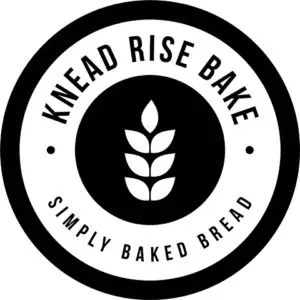I recently fell in love with the art of the croissant, or more honestly, I fell in love with the taste of the homemade croissant. Amazing! I was hooked after our first batch. As good as they were though, they were far from perfect. I had a long way to go and a lot to learn (still do).
So, I’ve been tackling croissants like I do every bread that we take on. I dive deep into the ingredients, steps, and tools it takes to make it; starting with the ingredients. And what better place to start than the ingredient that makes up the bulk of any croissant recipe, flour. Specifically, what kind do I need?
Simply put, for homemade croissants flour that is finely ground with a protein content of around 11-12% protein content is ideal. Several all-purpose brands like King Arthur AP flour or bread flour will do a good job in meeting this need, but a “00” pizza flour that hits the 11-12% protein range is a great choice as well.
It doesn’t need to be any more complicated than that, but it’s a good idea to have an understanding of these three types of flours and why you might use one over the other.
- All-purpose flour – made from a mixture of hard and soft wheat and has a protein content anywhere between about 8% up to 12% or so. Choose a brand that prints the protein content on their packaging, as King Arthur does. You want to be sure you are around the 11-12% sweet spot mentioned above.
- Bread Flour – similar to AP but with a higher baseline of protein typically falling between 11-14%. Some varieties incorporate a mixture of flours that create a toothy chew to crusts and crumbs. If using bread flour for croissants avoid those brands and stick to the 11-12% range for protein.
- “00” flour – a flour that is very finely ground. The numbers “00” are part of an Italian rating system to measure how fine flour has been ground. “00” is reserved for the finest flour. In the U.S. we don’t use this label system, but do find some common brands carry a “00” flour often referred to as pizza flour. These “00” pizza flours can be quite high in protein content, but some brands have low enough protein content to work for croissants. So, if you go the route of “00” flour make sure that you choose one that falls in the 11% protein range.
Why not Pastry Flour Since Croissants are Pastries?
After spending time looking through countless recipes it became clear that there was a wide range of suggestions out there. I saw everything from low protein (gluten) content like cake flour and pastry flour all the way up to high protein (gluten) content like bread flour.
Those flours have very different characteristics, and it would have left me quite confused in my early days of baking. Thankfully I have developed a pretty good grasp (for a home baker anyway) of flour types and how they differ from one country to the next. The differences between countries is key in understanding this one.
I saw many recipes that recommended using pastry flour because that is what French bakeries use for croissants. But I knew those would not work for me, even though intuition says to use pastry flour for a pastry. Why? Because American pastry flour and French pastry flour are a bit different when it comes to protein content. I won’t go into great detail here, but American pastry flour tends to be lower in protein (gluten) than French pastry flour. To get a flour similar to a French T45 pastry flour (at least in the states) grabbing something other than pastry flour is needed. The closest thing here in The States is likely a high-quality All-Purpose flour because of protein content differences.
Outside of European countries, pastry flour tends to have a protein content of only around the mid-single digits. The resulting dough will be too fragile and not hold up well to all the rolling, folding, layering and shaping needed for croissants. Pastry flour tends to produce flat croissants because of the lack of protein content as well. For French-style croissants (if not using French flour) stick with an 11%-12% protein all-purpose type of flour or if you can find it a finer ground 00 flour in that same protein range. Bread flour could work as well, but as mentioned above it can be hard to find one that isn’t too high in protein or without hard toothy flour types.
This is why suggesting a specific type of flour is likely not the most helpful when it comes to making croissants. Instead, recommending the qualities a flour should have is likely a better way to go about it. Don’t worry though, I’m not going to get overly technical with W scores, or P/L ratios, or ash content. There are a host of things that could be discussed if we were professional bakers writing for professional bakers, but at the end of the day, we are home bakers writing to home bakers. Getting into all of the ultra-technical stuff isolates too many people who do not have access around the world to flours that grade their ingredients this way.
As I mentioned above, look for around 11% protein content, and a fine ground flour and you’ll be just fine.
Will All-Purpose Flour Really Work for Croissants?
If you’re worried that AP flour will result in a biscuit or a roll instead of a croissant, don’t be. All-purpose flour is a bit of a wonder flour, in that it combines the right elements of soft and hard wheat to get a flour that can go in two directions. It can produce a nice flakey pastry and an airy yet chewy bread. However, when you want to push the limits in either direction you’ll want to venture away from AP flour. But for croissants, it is one of the best options here in the U.S. as it will produce the best results for most home bakers. Airy and flaky. Yum!
But do be sure to pick a brand that is on the higher end of the protein scale for AP flours. King Arthur AP is just right at 11.7%. You’ll avoid flat croissants this way.
Wouldn’t Bread Flour Work Just Fine as Well?
I personally think bread flour tends to produce a croissant that has a crust that is a bit thicker and crunchier than AP. I know a lot of folks use bread flour for croissants, but the texture seems a bit more on point with AP in my opinion.
Additionally, bread flour tends to create a dough that has a strong spring-back, making rolling out dough a bit more work than is ideal. In warmer environments, this will almost certainly cause melting of the butter and tearing of the dough as you struggle to roll the dough out enough to fold. Time is key when you’re racing against temperature, and excess friction from excess rolling is certainly not helpful either.
AP or “00” is just easier to work with during rolling, which ultimately is why we don’t use it as our first option. However, you can produce great croissants with bread flour. Many folks do!
Why “00” Flour? Isn’t it Just for Pizza?
If you can find “00” flour in the 11% range it will allow for more extensibility in your dough while keeping enough elasticity to hold its shape. Elasticity is often confused with extensibility amongst home bakers. We hear that protein equals gluten which equals elasticity, and wrongly assume this means a stretchier dough. This isn’t true. For stretchy dough we want extensibility. The more gluten and thus more elasticity dough has the tighter dough becomes. That is great for ensuring finished loaves of bread and croissants hold their shape instead of just flattening out while proofing. Which is why not enough gluten in dough results in flat bread due to its floppy nature. However, dough too heavy on gluten will also end up quite dense and flat because it will resist rising with all its elastic strength.
The same is also true in the opposite direction, too much extensibility and not enough elasticity will result in flat and formless bread as well. It’s a balancing act of sorts with all things baking. We need enough extensibility to allow for nice airy rises with enough elasticity to hold a shape to give it a chance to rise.
For croissants with American flour, “00” tends to do a great job at blending elasticity with extensibility. Which is the biggest advantage of working with this flour. When rolling out “00” dough, it will be less likely to snap back (extensible). This means we will get better lamination and layers because we’re working more efficiently. The less we work/roll the less likely our butter is to melt and the dough is then less likely to absorb it. But unlike low protein pastry flour that has great extensibility, “00” dough will have enough protein to hold shape resulting in an airy croissant (elasticity).
So Which is Better?
We cannot make that distinction for you. There are just too many variables at play when it comes to brands of flour. Just look for that 11-12% range and a fine ground flour and you will be pleased with the results!
But, I Really Wanted the Technical Stuff!
Okay, I’ll cave. But, I’ll keep it short. As a starting point and in general we saw lots of recommendations and boiled them down to this: a strength score of ~ W300 and a P/L Ratio of ~ 0.6 is ideal and protein content between 11-12%. But, we don’t have easy access to flour that gives us those ratings. So we just stick to what we have access to. Primarily, the protein content. 🙂

